mail: Surgeon@bodybybatal.com
phone: (310) 230-5911

Neck, Jawline, & Chin Lipo
Neck and Jawline Liposuction
Conveniently located to serve the areas of Beverly Hills and Tarzana, CA

Patients who are self-conscious about a “double-chin” report improved confidence after liposuction.
Fluctuations in body weight as well as just the natural aging process lead to a bulky neck or double chin as the underlying muscle loses tone and fat accumulates. Liposuction with platysmaplasty may reduce the size of fatty jowls and the double chin as well as tighten the neck muscles to create a stronger and more contoured jawline.
Before and After Photos
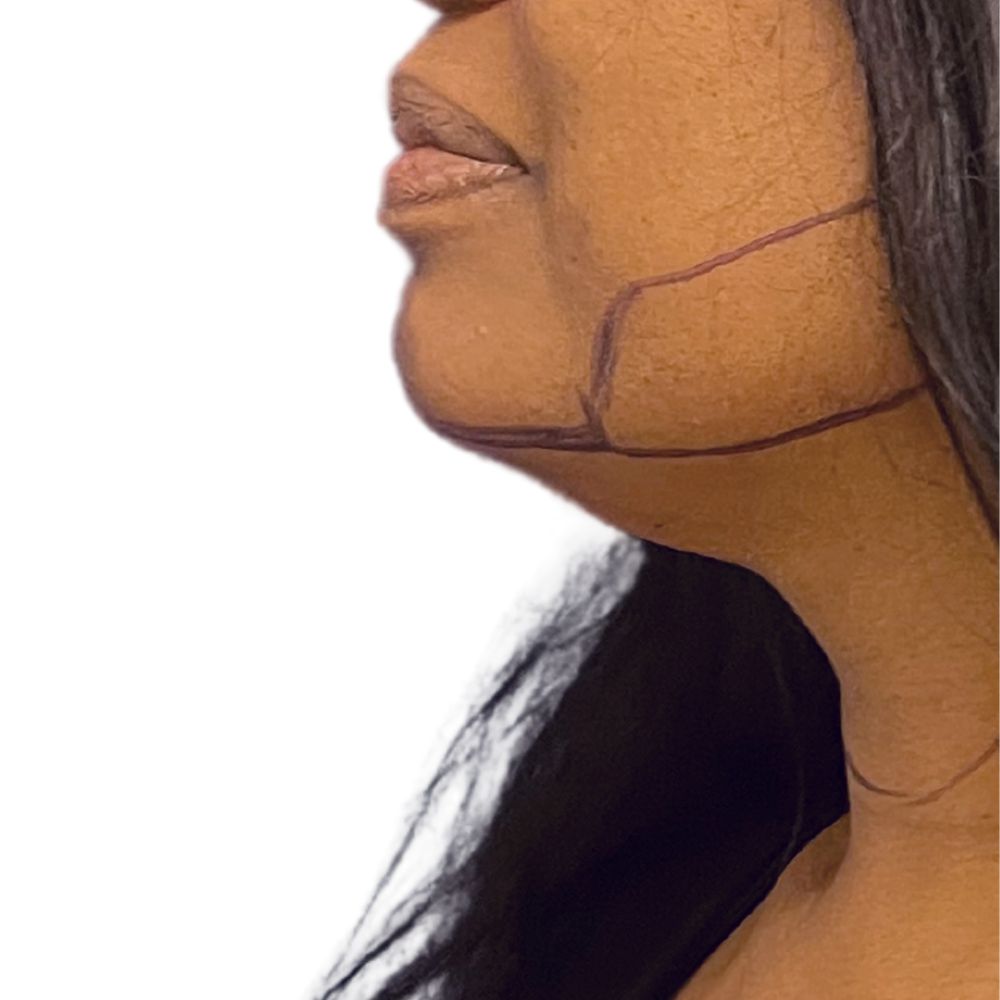
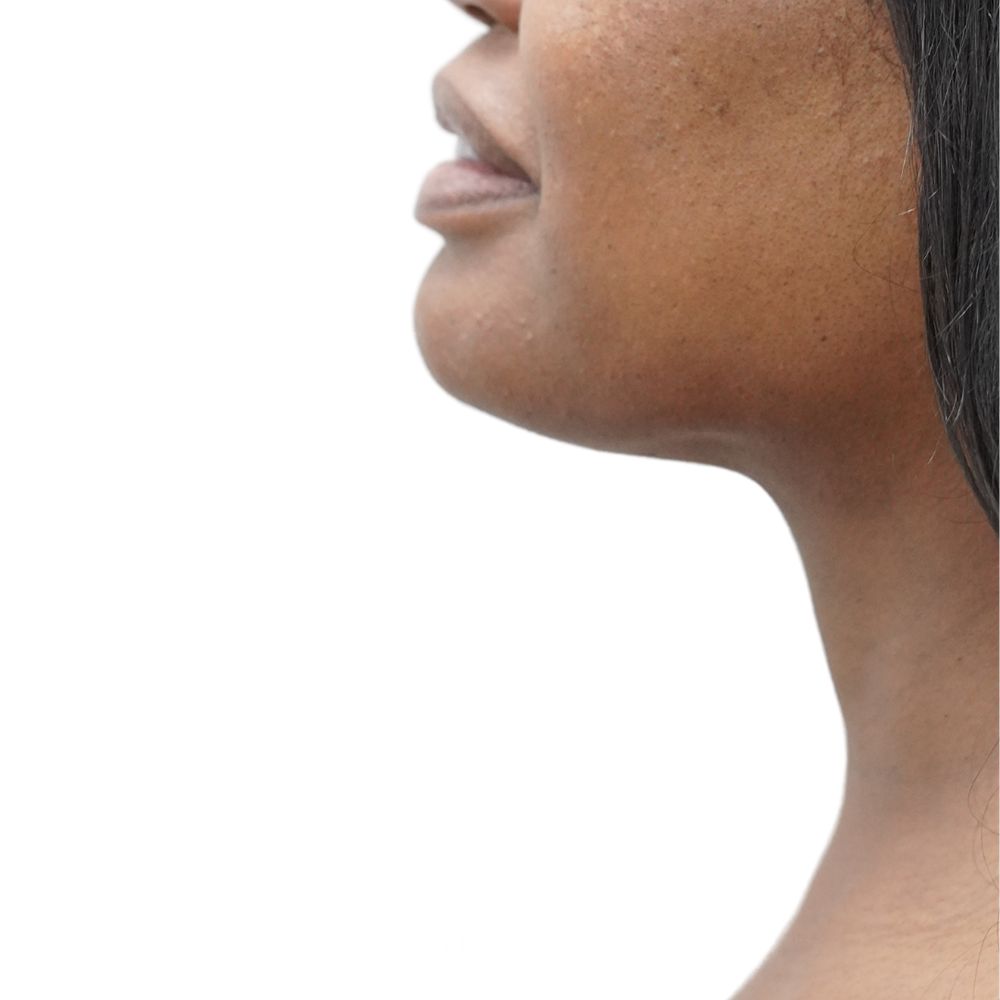
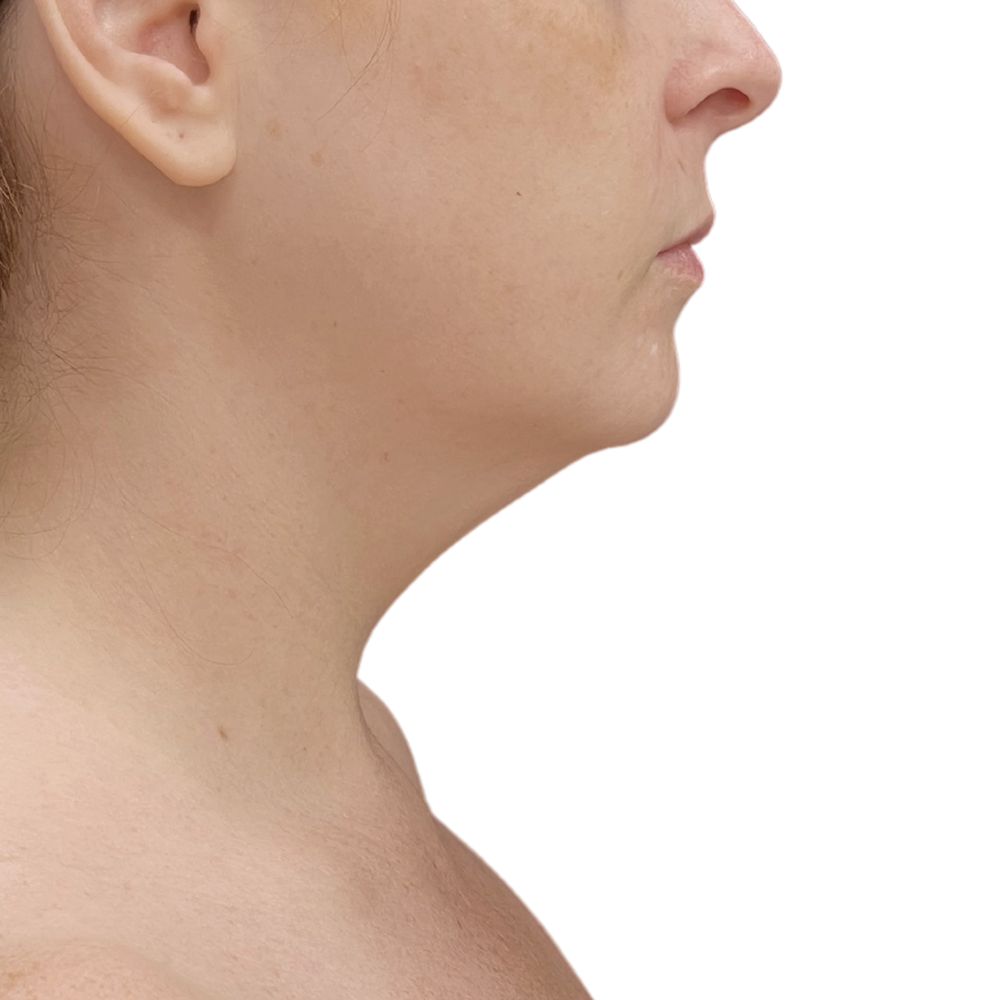
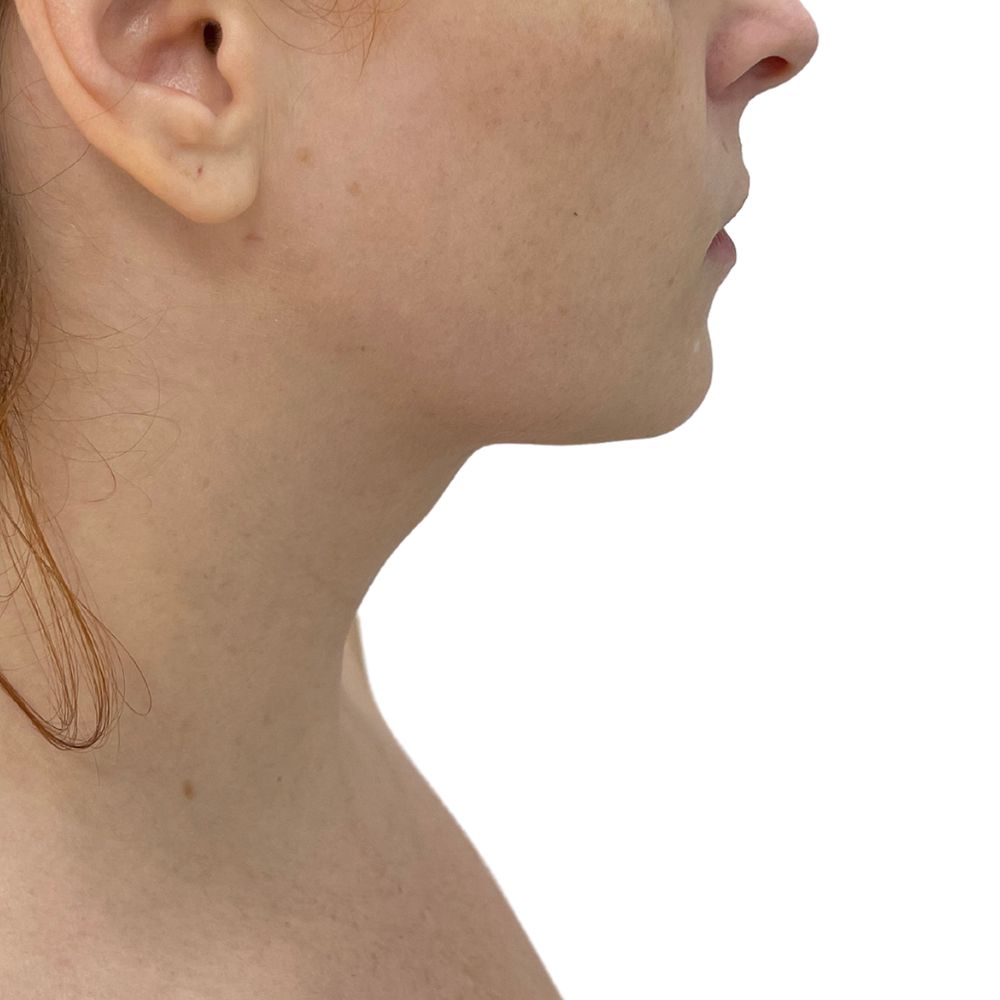
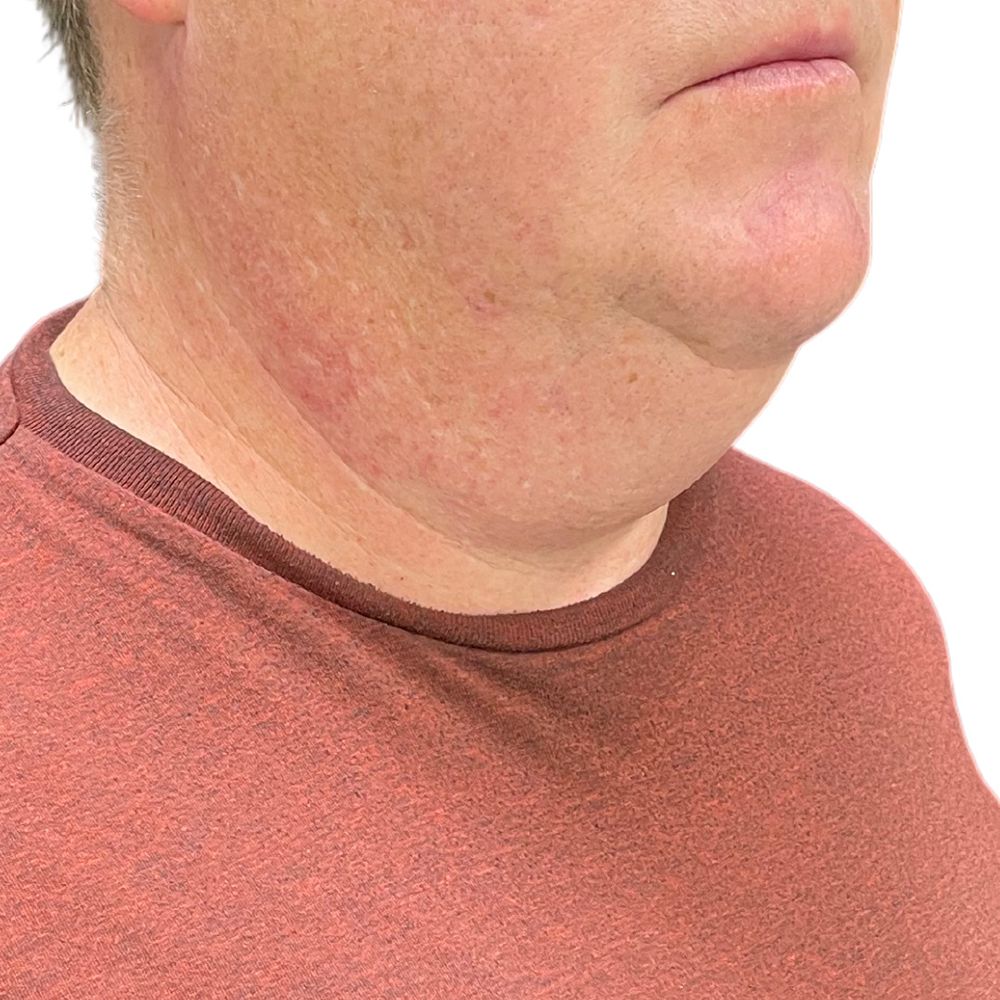
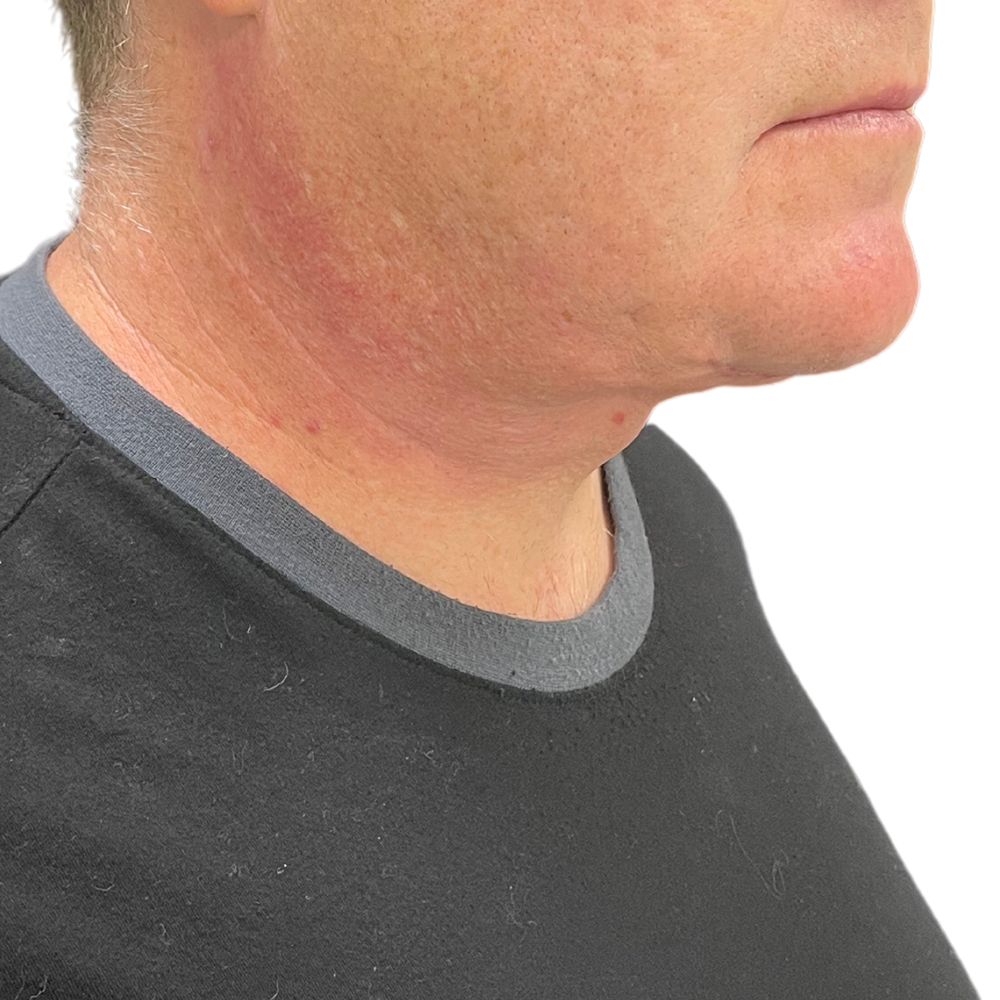
What is Facelift Surgery?
Facelift surgery, also known as rhytidectomy, is a cosmetic procedure designed to address signs of aging in the face and neck. The purpose of this surgery is to tighten and remove sagging skin, potentially tighten facial muscles, and reposition excess fat, resulting in a more youthful appearance.
Facelift surgery, also known as rhytidectomy, is a cosmetic procedure designed to address signs of aging in the face and neck. The purpose of this surgery is to tighten and remove sagging skin, potentially tighten facial muscles, and reposition excess fat, resulting in a more youthful appearance. During the facelift procedure, incisions are typically made above the hairline, in the natural creases around the ears, and sometimes under the chin. Through these incisions, the surgeon is able to access the underlying facial muscles and remove excess fat if necessary. The skin is then pulled taut and repositioned, and any excess skin is trimmed to achieve a smoother, more lifted appearance. The incisions are then closed, and the patient is left with a fresher, rejuvenated look. Facelift surgery offers a range of potential outcomes. It can tighten and remove sagging skin on the face and neck, reduce jowls, and smooth the jawline. In some cases, it can also tighten facial muscles and reposition excess fat, further enhancing the overall result. It is important to note that facelift surgery does leave behind permanent scars. However, these scars are typically discreetly positioned and can be easily concealed by hair, ensuring that the benefits of the surgery outweigh any potential scarring concerns. In conclusion, facelift surgery is a cosmetic procedure that aims to tighten sagging skin, potentially tighten facial muscles, and reposition excess fat, resulting in a more youthful and rejuvenated appearance. It offers a range of benefits, including the reduction of jowls and the smoothing of the jawline, all while keeping any scarring hidden..
Why Consider a Facelift?
Many individuals may choose to consider a facelift procedure for various reasons, all of which can have significant benefits for their overall appearance and self-confidence. A facelift can effectively address common signs of aging, including sagging skin, jowls, deep wrinkles, and loose skin on the neck.
The primary benefit of a facelift is the ability to reverse the effects of aging, helping individuals feel more youthful and rejuvenated. By tightening the skin and underlying muscles, a facelift can significantly improve the appearance of sagging skin and jowls, creating a more defined and contoured facial structure. Additionally, deep wrinkles that may have formed over time can be smoothed out, resulting in a smoother, more youthful-looking complexion.
For those who feel self-conscious about their appearance and are concerned about aging neck, a facelift can be particularly beneficial. By addressing loose skin on the neck, a facelift can restore a more toned and lifted appearance to the area. This can have a positive impact on both personal and professional aspects of one’s life, boosting self-esteem and confidence.
Furthermore, choosing to have a facelift can help individuals align their appearance with how they feel internally. Many individuals report feeling much younger than they look, which can lead to a disconnect between their perceived and actual age. By undergoing a facelift, one can create a harmonious balance between their physical appearance and inner vitality.
Ultimately, deciding to consider a facelift can have a transformative effect on one’s life, boosting not only their self-confidence but also their career and relationships. With the ability to address multiple signs of aging and enhance one’s overall appearance, a facelift can be a worthwhile investment in one’s self-image and well-being.
Types of Facelift
A facelift, also known as rhytidectomy, is a surgical procedure that aims to reverse the signs of aging and restore a more youthful appearance to the face and neck. There are several types of facelift procedures available, each tailored to address specific concerns and provide different levels of rejuvenation. In this article, we will explore the various types of facelifts, including traditional facelifts, mini facelifts, mid facelifts, and nonsurgical facelift options. We will delve into their techniques, advantages, and expected outcomes, helping you to gain a better understanding of which facelift option may be best suited for your unique needs and desires. Whether you are seeking to reduce sagging skin, smooth deep creases, improve facial contours, or enhance your overall appearance, understanding the different types of facelifts is crucial in making an informed decision and achieving your desired aesthetic goals..
Traditional Skin onlly Facelift
A traditional skin-only facelift is a surgical procedure that is focused on tightening and removing sagging skin on the face and neck. This procedure is specifically designed to address the effects of aging and gravity on the skin, and it can provide a rejuvenated and youthfully refreshed appearance.
It is important to note that a traditional skin-only facelift does not involve tightening the facial muscles or removing excess fat. Instead, the surgeon focuses solely on removing the excess skin and tightening the remaining skin to create a smoother and more youthful appearance.
During the procedure, incisions are made along the hairline and behind the ears to allow the surgeon to access the underlying structures of the face. The excess skin is then carefully lifted and tightened, and any excess is trimmed away. The incisions are then closed using sutures or other techniques.
Recovery from a traditional skin-only facelift typically takes several weeks, during which time patients may experience some swelling, bruising, and discomfort. It is important to follow all post-operative instructions provided by the surgeon to ensure proper healing and minimize the risk of complications.
In conclusion, a traditional skin-only facelift is a surgical procedure that focuses on tightening and removing sagging skin on the face and neck. It is not designed to tighten facial muscles or remove excess fat. By addressing the effects of aging and gravity, this procedure can help to restore a more youthful and refreshed appearance.
Limited Incision Facelift
A traditional skin-only facelift is a surgical procedure that is focused on tightening and removing sagging skin on the face and neck. This procedure is specifically designed to address the effects of aging and gravity on the skin, and it can provide a rejuvenated and youthfully refreshed appearance.
It is important to note that a traditional skin-only facelift does not involve tightening the facial muscles or removing excess fat. Instead, the surgeon focuses solely on removing the excess skin and tightening the remaining skin to create a smoother and more youthful appearance.
During the procedure, incisions are made along the hairline and behind the ears to allow the surgeon to access the underlying structures of the face. The excess skin is then carefully lifted and tightened, and any excess is trimmed away. The incisions are then closed using sutures or other techniques.
Recovery from a traditional skin-only facelift typically takes several weeks, during which time patients may experience some swelling, bruising, and discomfort. It is important to follow all post-operative instructions provided by the surgeon to ensure proper healing and minimize the risk of complications.
In conclusion, a traditional skin-only facelift is a surgical procedure that focuses on tightening and removing sagging skin on the face and neck. It is not designed to tighten facial muscles or remove excess fat. By addressing the effects of aging and gravity, this procedure can help to restore a more youthful and refreshed appearance.
Limited Incision Facelift
The limited incision facelift is a cosmetic procedure that differs from the routine facelift in terms of the incisions used and the specific areas targeted. Unlike a routine facelift, which involves larger incisions and lifting the entire face, the limited incision facelift focuses on targeting specific areas of the face and neck.
The incisions used in a limited incision facelift are smaller and strategically placed to minimize visible scarring. The most common incisions include one located in the natural crease in front of the ear, another within the temporal hairline, and sometimes a small incision under the chin. These incisions are carefully chosen to allow for effective tightening of the targeted areas without the need for extensive incisions.
One of the main advantages of the limited incision facelift is that it allows for a more targeted approach. By using smaller incisions, specific areas such as the jawline, cheeks, and neck can be addressed individually. This allows for a customized treatment plan that addresses the unique concerns of each patient. Additionally, the smaller incisions result in minimal scarring, making the procedure less noticeable and more aesthetically appealing.
In summary, the limited incision facelift differs from a routine facelift by utilizing smaller incisions and targeting specific areas of the face and neck. By focusing on specific areas, a more customized and targeted approach can be achieved, resulting in a more natural and rejuvenated appearance
SMAS Facelift
The SMAS facelift is a surgical procedure designed to address signs of aging, such as sagging, drooping, and wrinkled skin on the face and neck. SMAS stands for the superficial musculo-aponeurotic system, which is a layer of tissue located beneath the facial muscles. During the facelift, the SMAS layer is resuspended and secured to counteract the effects of aging and gravity.
The procedure involves making incisions along the hairline and near the ears to gain access to the underlying tissues. The SMAS layer is then carefully lifted, repositioned, and secured using sutures or specialized devices. By tightening and repositioning the SMAS layer, the facial and neck skin is also lifted, resulting in a more youthful appearance. This technique allows for a natural-looking outcome, with less tension on the skin and improved longevity.
The SMAS facelift can be performed in tandem with various other procedures to achieve comprehensive facial rejuvenation. Common adjunct procedures include neck lift, eyelid surgery (blepharoplasty), brow lift, and fat grafting. Combining these procedures can address multiple signs of aging simultaneously, providing more comprehensive and satisfying results.
The benefits of the SMAS facelift are significant. By resuspending and securing the SMAS layer, the procedure effectively tightens and lifts sagging skin, particularly in the lower face and neck. This results in a smoother and firmer appearance, with diminished jowls, decreased wrinkles, and improved overall facial contour. The longevity of the results is also enhanced, as the procedure addresses the underlying causes of aging and not just the superficial skin. Overall, the SMAS facelift is a powerful surgical technique that can restore a more youthful and rejuvenated appearance to individuals experiencing sagging and drooping due to aging and gravity.
Deep Plane Facelift
A deep plane facelift is a surgical procedure that aims to provide longer-lasting results by repositioning the deeper tissues and muscles of the face. This technique goes beyond the traditional superficial musculoaponeurotic system (SMAS) lift, which only addresses the superficial layers of the face.
During a deep plane facelift, the surgeon makes incisions along the hairline, temples, and behind the ears. They then separate and lift the deeper tissues and muscles of the face, allowing for repositioning and tightening. By working at this deeper level, the procedure can create more comprehensive and dramatic results compared to a traditional facelift.
One of the main differences between a deep plane facelift and a SMAS lift is the extent of tissue manipulation. While a deep plane facelift involves repositioning the deeper layers, a SMAS lift primarily focuses on the superficial layers of the face. As a result, deep plane facelifts are considered to provide more significant and longer-lasting results.
However, due to the nature of the deep plane technique, there is a potential risk to the facial nerve. The facial nerve is responsible for facial movements and sensitivity, and any damage during the surgery can lead to facial paralysis or weakness. Therefore, it is essential to choose a skilled and experienced surgeon to minimize this risk.
In conclusion, a deep plane facelift offers longer-lasting results by addressing the deeper tissues and muscles of the face. It differs from a traditional SMAS lift and carries a potential risk to the facial nerve. It is crucial to thoroughly research and consult with a qualified surgeon before considering this procedure.
Before the procedure
Before undergoing a face-lift procedure, there are several important pre-procedure preparations that need to be considered. One of the key aspects is the choice of anesthesia. There are different options available, including local anesthesia with sedation or general anesthesia.
Local anesthesia with sedation involves numbing the surgical area with an injected anesthetic while the patient remains conscious. This option is often preferred for less invasive face-lift procedures. General anesthesia, on the other hand, entails the patient being completely unconscious and unaware during the surgery. This option is typically recommended for more extensive face-lift procedures.
In addition to anesthesia options, it is crucial to prepare the patient physically and emotionally for the procedure. This may involve obtaining medical clearance from the patient’s primary care physician, as well as discussing any medications or supplements that need to be stopped prior to surgery. It is also important to educate the patient about the expected recovery process and any potential risks or complications.
When it comes to incisions for a face-lift procedure, there are several options to consider. The most common incision locations include along the hairline, around the ears, and sometimes under the chin. The specific choice of incision location depends on the patient’s individual anatomy and desired outcome.
In some cases, associated procedures may be performed concomitantly with the face-lift. These can include eyelid surgery, brow lift, or neck lift. This decision is made during the pre-procedure consultation and is based on the patient’s goals and the surgeon’s recommendations.
In summary, before undergoing a face-lift procedure, pre-procedure preparations including anesthesia options, physical and emotional preparation, incision choices, and consideration of associated procedures are all important factors to take into account.
During the procedure
During the face-lift procedure, several aspects are addressed to achieve a more youthful and rejuvenated appearance. The main goal is to elevate the skin, tighten tissues and muscles, and sculpt or remove excess fat.
To begin, the surgeon carefully elevates the skin of the face and neck, exposing the underlying tissues. This allows for better access and manipulation of the structures that will be improved. By lifting the skin, drooping and sagging can be corrected, giving the face a firmer and more refreshed look.
Once the skin is elevated, the surgeon focuses on tightening tissues and muscles. Loose muscles and tissues are repositioned and secured in a more youthful position. This tightening helps to create a smoother and more defined contour to the face and neck, reducing the appearance of wrinkles and sagging.
In addition to elevating the skin and tightening tissues, the surgeon may also sculpt or remove excess fat. This helps to further define the facial features and enhance the overall appearance. Liposuction techniques may be used to remove fat deposits and create a more balanced and refined contour.
When it comes to incisions, there are various options available. Traditional incisions are typically made in the hairline, extending around the ear and sometimes into the lower scalp. Limited incisions are smaller and usually located around the ear, making them less noticeable. Neck lift incisions are made under the chin or behind the ears to address sagging and excess skin in the neck area.
In summary, the face-lift procedure involves elevating the skin, tightening tissues and muscles, and sculpting or removing fat. There are different options for incisions, including traditional, limited, and neck lift incisions. This comprehensive approach helps to achieve a smoother, more youthful, and rejuvenated appearance.
After the procedure
After undergoing a face-lift procedure, ensuring proper post-operative care is crucial for optimal recovery. The following are recommended actions for post-operative care:
1. Resting: Resting with the head elevated is highly recommended to minimize swelling and promote healing. It is advisable to sleep with several pillows to keep the head elevated at a comfortable angle.
2. Pain medication: To manage any discomfort or pain after the surgery, it is essential to take prescribed pain medication as directed by the surgeon. It is important not to exceed the recommended dosage.
3. Cool packs: Applying cool packs or ice packs wrapped in a thin towel can help reduce pain and swelling. Gently placing the cool packs on the treated areas for 10-15 minutes at a time, with breaks in between, can provide relief.
4. Incision care: It is vital to keep the incisions clean and dry. Following the surgeon’s instructions for incision care, such as using mild soap and water to gently clean the area and applying any recommended ointments or dressings, is necessary for preventing infection.
5. Avoid strenuous activities: Physical exertion, bending, and lifting heavy objects should be avoided for several weeks post-surgery. Engaging in such activities can strain the incisions and prolong healing time.
6. Follow-up appointments: Regular follow-up appointments with the surgeon are necessary to monitor progress, address any concerns, and remove any stitches or bandages when instructed.
Remember that every patient’s recovery journey may vary, and it is crucial to consult with your surgeon regarding any specific instructions tailored to your situation.
Facelift Procedure Decisions
When it comes to making decisions about undergoing a facelift procedure, there are several factors to consider. From understanding the different types of facelifts available to determining the right time to have the procedure, individuals must weigh their desires for rejuvenation against potential risks and recovery time. Additionally, consulting with a qualified plastic surgeon who can guide them through the decision-making process is crucial. In this article, we will explore some essential aspects to consider when making facelift procedure decisions, including the various techniques, the importance of realistic expectations, the recovery process, and potential risks and complications. By evaluating these factors, individuals can make informed choices that align with their desired outcomes and ensure a positive experience throughout their facelift journey.
Anesthesia
During a facelift procedure, the recommended anesthesia type is a ‘light’ general anesthetic, which ensures that the patient is well-tolerated and allows for a quick wake-up and optimal comfort. This anesthesia approach aims to minimize the risks and potential complications associated with a deeper general anesthesia.
The use of a ‘light’ general anesthetic provides the benefit of reducing the patient’s awareness and discomfort during the surgery while maintaining a rapid recovery. The anesthesia team administers intravenous medications that induce a state of unconsciousness and control pain during the procedure. Additionally, the anesthesiologist closely monitors the patient’s vital signs and adjusts the anesthesia level accordingly to ensure the appropriate depth of sedation.
Specific concerns regarding the anesthesia technique can be addressed with both the staff and the doctor. Patients may discuss any previous experiences with anesthesia or concerns about potential side effects. Additionally, patients can inquire about the team’s qualifications and experience in administering the recommended ‘light’ general anesthetic. It is essential to communicate any pre-existing medical conditions, allergies, or medications to the anesthesiologist to ensure the safety and efficacy of the anesthesia technique.
In conclusion, for a facelift procedure, a ‘light’ general anesthetic is the recommended approach to ensure patient comfort, reduce risks, and allow for a quick wake-up. Open communication with the anesthesia staff and the doctor regarding specific concerns can help address any particular needs or considerations before undergoing the surgery.
Incision line Placement and Length
During a routine facelift, careful planning goes into determining the placement and length of the incision lines. These incisions are strategically placed to minimize scarring and ensure optimal access to the SMAS (superficial musculoaponeurotic system) and platysma muscle.
The incision line placement typically begins within the hairline at the temples, extends downwards in front of the ears, and then folds behind the ears into the natural crease where it is well-hidden. This placement allows the surgeon to effectively elevate and tighten the underlying tissues, as well as remove excess skin. The incision line length is determined by various factors, including the extent of correction needed and the surgical technique employed.
To access the SMAS and platysma muscle, the incisions are typically hidden within the natural creases and contours of the face. This ensures that they are inconspicuous and heal well, resulting in minimal visible scarring. By carefully placing the incisions, the surgeon is able to lift and reposition the underlying structures, creating a more youthful appearance.
An image provided depicts the incision lines used in a full facelift. It showcases the placement and length of the incisions, emphasizing their hidden nature and how they allow access to the SMAS and platysma muscle.
In conclusion, the incision line placement and length for a routine facelift are determined based on individual anatomy and the desired outcome. By strategically hiding the incisions, surgeons can access the deeper layers of tissue, resulting in a more comprehensive rejuvenation of the face.
Recovery after Facelift Surgery
Recovery after facelift surgery involves following specific post-operative care instructions to ensure optimal healing and results. Immediately following the surgery, patients are typically advised to keep their head elevated for the first few days to minimize swelling. Cold compresses can also be used to reduce swelling and discomfort.
Limitations on activity are crucial during the recovery process. Physical exertion, bending over, and heavy lifting should be avoided during the initial few weeks to prevent strain or incision complications. Patients are also advised to avoid exposure to direct sunlight and wear sunscreen to protect the healing incisions.
Pain management strategies may include prescribed pain medication, which should be used as directed. Over-the-counter pain relievers may also be recommended. It is important to communicate any excessive pain or unusual symptoms to the surgeon.
The timeline for returning to work varies depending on individual healing rates and the extent of the procedure. Generally, patients can expect to return to work within two to three weeks, once the swelling and bruising have subsided. However, it is important to consult with the surgeon for personalized advice.
Follow-up appointments are necessary to monitor progress and ensure proper healing. These appointments typically occur within the first week after surgery, followed by subsequent visits as advised by the surgeon. These appointments allow the surgeon to assess the outcome, address any concerns, and provide further guidance for ongoing care.
In summary, proper recovery after facelift surgery requires adhering to post-operative care instructions, limiting activity, managing pain, following a timeline for returning to work, and attending necessary follow-up appointments.
Risks of Facelift Surgery
Facelift surgery, like any other surgical procedure, carries certain risks and potential complications that patients should be aware of. While the majority of patients undergo facelift surgery without any significant issues, it is important to understand the possible complications that can arise.
One of the main risks associated with facelift surgery is bleeding. Although the surgeon will take steps to minimize bleeding during the procedure, it is possible for some patients to experience heavier bleeding than expected. In rare cases, this may require additional intervention to stop the bleeding.
Infection is another risk that patients need to be aware of. While every precaution is taken to maintain a sterile surgical environment, it is still possible for an infection to occur. This can prolong the healing process and may require treatment with antibiotics.
Scarring is a common side effect of facelift surgery. While efforts are made to minimize visible scarring, it is important to understand that some scarring is inevitable. However, skilled surgeons will make incisions in inconspicuous areas and employ techniques to minimize visible scarring.
Nerve damage is a potential risk of facelift surgery, although it is relatively rare. Damage to nerves can result in temporary or permanent numbness, tingling, or weakness in the face. This risk can be minimized by choosing an experienced and skilled surgeon.
Additionally, other potential complications of facelift surgery include allergic reactions to medications or anesthesia, blood clots, and keloids (excessive scar tissue). These risks are relatively low, but it is essential for patients to be aware of them.
In conclusion, while facelift surgery offers remarkable results in facial rejuvenation, it is important for patients to understand and consider the potential risks and complications associated with the procedure. By choosing a skilled surgeon and following post-operative care instructions, patients can minimize these risks and increase the chances of a successful outcome.
Facelift Results
A facelift, also known as rhytidectomy, is a surgical procedure designed to improve the visible signs of aging in the face and neck. As we age, our skin loses elasticity and firmness, leading to sagging, wrinkles, and deep creases. This procedure aims to reverse these effects by tightening the underlying muscles, removing excess fat, and repositioning the skin.
The results of a facelift surgery can be quite remarkable. One can expect a significant improvement in the visible signs of aging, such as a smoother appearance, reduced wrinkles, and tighter skin. The procedure can address various concerns, including loose jowls, deep lines around the mouth, excess skin and fat in the neck, and sagging cheeks.
The outcomes of a facelift can vary depending on the individual and the extent of the procedure performed. Generally, patients will notice a more youthful and rejuvenated appearance. The face and neck will appear firmer, with a more defined jawline and improved overall contour. The procedure can also improve the appearance of bags and dark circles under the eyes, as well as the texture and tone of the skin.
It is important to note that a facelift does not halt the aging process, but it can effectively turn back the clock, making one appear considerably younger. The results of a facelift can be long-lasting, and many patients report increased self-confidence and satisfaction with their appearance. By addressing the visible signs of aging, a facelift can help individuals feel more refreshed and rejuvenated, enhancing their overall quality of life.
Facelift Cost
The cost factors associated with a facelift procedure can vary depending on several factors. One of the main factors is the hospital or surgical center costs. These costs include the use of the facility, including operating rooms and recovery areas. The fees for the surgical team and staff are also included in this category.
Anesthesia is another cost factor to consider. The type of anesthesia used during the procedure and the qualifications of the anesthesiologist can affect the overall cost. The more experienced and skilled the anesthesiologist, the higher the cost may be.
Recovery costs are also important to consider. This includes the post-operative care, follow-up appointments, and any necessary medications or treatments during the recovery period. These costs can vary depending on individual needs and the duration of the recovery process.
Other related expenses may include pre-operative consultations, medical tests, and any additional procedures that may be required for desired results.
It is important to note that the final cost of a facelift procedure may be significantly higher than the base costs mentioned above. The desired results of the surgery, the expertise of the surgeon, and the geographical location can all impact the final cost. Some surgeons may charge higher fees based on their reputation and expertise, and the cost of living in a particular area can also affect the overall cost.
Overall, it is essential to consult with a qualified surgeon to get an accurate estimate of the cost factors associated with a facelift procedure, as every individual’s needs and circumstances are unique.
Conclusion: Facelift Surgery
In conclusion, facelift surgery is an effective procedure that can restore a more youthful appearance by lifting and tightening sagging facial tissues. As discussed in the background information, the aging process leads to a loss of elasticity in the skin and underlying tissues, resulting in the appearance of wrinkles, jowls, and sagging skin.
By undergoing facelift surgery, individuals can reverse these signs of aging and achieve a more rejuvenated look. During the procedure, the surgeon carefully lifts and repositions the facial tissues, removing any excess skin and tightening the underlying structures. This not only smooths out wrinkles but also restores the natural contours of the face.
The importance of facelift surgery lies in its ability to improve self-confidence and enhance overall appearance. As individuals age, they may feel self-conscious about the visible signs of aging on their face. By restoring a more youthful appearance, facelift surgery can boost self-esteem and help individuals feel more confident in their own skin.
It is important to note that while facelift surgery can provide excellent results, it is not a permanent solution. The effects of aging will continue to naturally occur over time. However, a facelift can effectively turn back the clock, allowing individuals to enjoy a more youthful appearance for many years.
In conclusion, facelift surgery offers a transformative solution for those looking to restore a more youthful appearance. By lifting and tightening sagging facial tissues, individuals can regain their confidence and feel more comfortable in their own skin.
